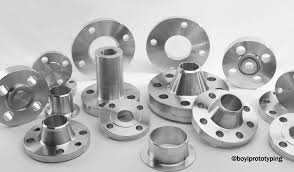How Does Solar Work? A Complete Guide for Homeowners

Solar energy is a great way to power your home. However, many people wonder exactly how solar systems work.
Solar panels generate electricity when particles of sunlight, called photons, knock electrons free from atoms in silicon. These electrons then flow through conductive wire and convert into usable electricity, known as AC electricity.
Solar Panels
Solar panels, or photovoltaic (PV) cells, convert sunlight into electricity by using a process called the photovoltaic effect. This happens when photons from the sun hit the semiconductive material (usually silicon) inside your PV panel, activating electrons and releasing them. The free electrons flow through conductors in the panel, down wires and into a junction box where they’re converted to direct current (DC) electricity.
From there, the DC electricity runs through an inverter to become alternating current (AC), the kind of power that you plug into your appliances. Your inverter also has features that help you track your solar energy usage, so you can see how much of your home’s electricity is generated by your PV system.
A typical grid-tied PV system produces more electricity during sunny days than your house needs. This surplus energy is sent back to the power grid, which your local utility company credits you for through a system known as net metering.
The electricity your solar system generates is clean and renewable – unlike fossil fuels, it doesn’t release harmful greenhouse gases that contribute to climate change. If your solar system has battery storage, it can also store excess generation for cloudy or nighttime use. This allows you to benefit from systems like feed-in tariffs that reward you for sending energy back into the grid.
Inverters
Solar energy transforms sunlight into electricity that we use to power our homes and businesses. This renewable energy source is the most abundant in the universe and it’s able to provide enough power on a daily basis to power all of the homes in the United States—and even more globally!
When sunlight shines on a solar panel, it turns particles of light called photons into electrons of direct current (DC) electricity. Then a solar inverter—a box installed on your roof or located near the service panel inside your house—changes that DC electricity into alternating current (AC) electricity. This is what powers your TV, computers, appliances and everything else in your home that runs off of AC electricity.
Inverters can be connected directly to batteries or they can connect to a grid that provides energy from the utility company for those with “grid-tied” solar systems. Essentially, a solar inverter is the brain of your solar energy system and performs several vital functions including converting the current produced by your panels into usable AC electricity, protecting against islanding and feeding excess generation back into the grid for credit with the utility.
The inverter also has to be protected against over-voltage and short circuits. That’s why it is important to limit how many electrical devices are plugged into an inverter at any one time to avoid a potential power overload.
Batteries
Solar panels, also known as photovoltaic (pv) panels or PV cells, turn sunlight into electricity. They are most often arranged into an array on your rooftop and made of glass, silicon and wires. They are most effective on sunny days with plenty of exposure to the sun, but some people add batteries to their solar systems so they can produce energy even during cloudy or nighttime hours.
To generate solar electricity, the pv cell needs to absorb light. It is a sandwich of two slices of semi-conducting material, most often silicon. When the sun’s rays hit the pv cell, photons activate electrons and knock them free from the silicon, causing a flow of electricity, according to the University of Minnesota Duluth.
Since silicon is not a very good conductor of electricity, the cells are treated with boron and phosphorus to improve its efficiency. This process is called doping. Boron creates a positive charge while phosphorus creates a negative charge, making the pv cell more effective in generating electrical current.
There are two ways to connect a battery into a solar power system: in series and in parallel. A series connection puts the batteries in a train-like structure using one wire this creates only one path for electricity to travel, while a parallel connection hooks them up side by side using multiple wires.
Net Metering
While you’re using electricity at home during the day, your solar system can send excess energy back to the grid in exchange for billing credits. That extra energy can cancel out the power you use at night, lowering your electric bill and speeding up your solar payback period.
The details vary a bit by state and local jurisdiction, as well as the policies of your utility provider. But “generally speaking, net metering lowers your overall electricity bills,” Michaud says, allowing homeowners to fully offset their utility bills with the help of their own solar production. Credits are usually detailed on the same utility bill you received before going solar, and at the end of a year (or a designated true-up date) your kilowatt hours from solar are reconciled with your kilowatt hours purchased from the utility, at close-to-wholesale rates.
This arrangement is known as virtual net metering, and the value of your energy production is measured by a single meter that tracks both your consumption and generation. Some states offer full retail net metering, which increases your savings and accelerates your solar payback period even more, while also contributing to energy price stability for everyone in the community. To learn more about how these different arrangements work in your region, visit the Database of State Incentives for Renewables & Efficiency to filter by your state or territory.







